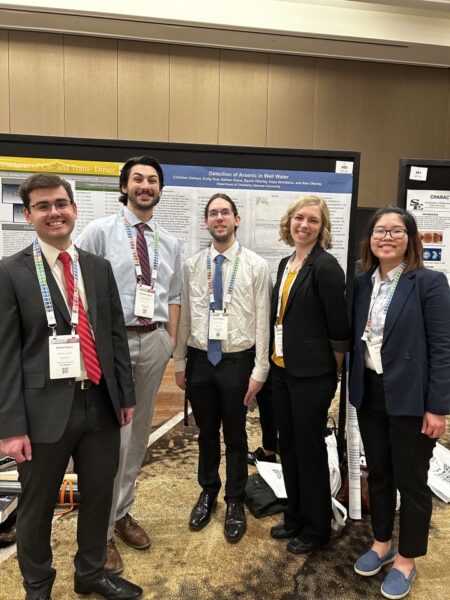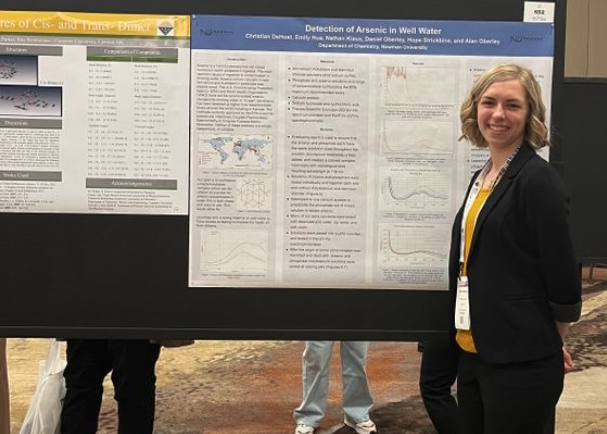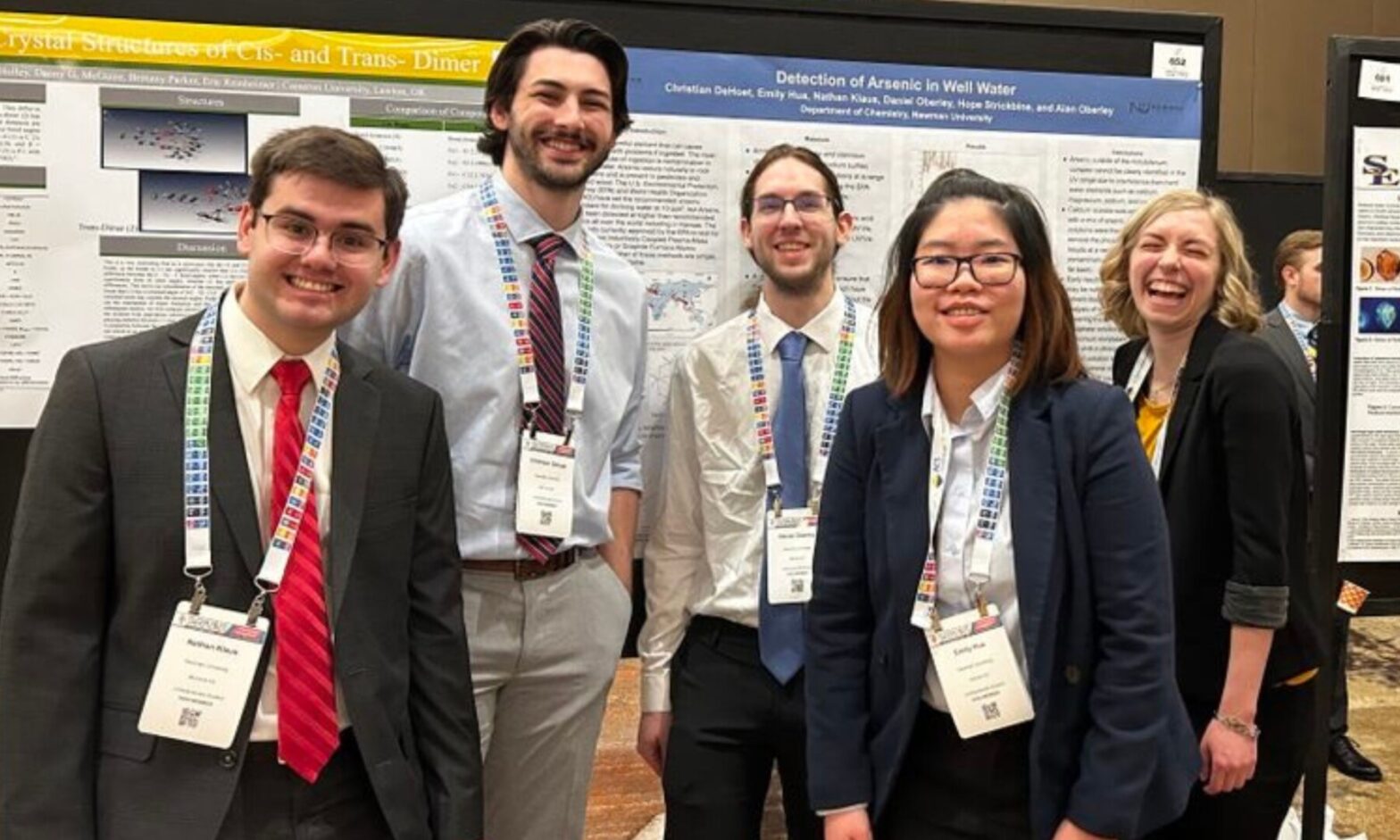What do two biochemistry majors, two chemistry majors and a Newman graduate all have in common?
They all shared research at a national conference held in Oklahoma City as part of their chemistry research class with Associate Professor of Chemistry Alan Oberley.
Current students Nathan Klaus and Hope Strickbine along with recent graduates Daniel Oberley ’23, Alex Dehoet ’23 and Emily Hua ’23 presented their research Friday, Nov. 17, on arsenic detection in well water.
Klaus, a senior majoring in chemistry and Strickbine, a senior majoring in biochemistry learned about the American Chemical Society (ACS) conference through Oberley. Klaus applied to go, not really knowing what he was getting into.
“I got a message at 9 p.m. the night of the application deadline asking if I wanted to go or not before I even really knew what I was attending. I figured whatever it turned out to be, it would be a good networking opportunity, so I agreed to attend and I’m glad I made that choice,” said Klaus.

The group presented a poster about new methods for detecting arsenic in well water.
According to the National Institute of Environmental Health Sciences, arsenic is a naturally occurring semi-metallic element that is widely distributed in the Earth’s crust. It is found in water, air and soil.
“Alex and Danny presented a version of this presentation at Scholars Day in the spring of 2023, so we were able to use the basis of their presentation to build the poster for the ACS conference,” said Strickbine.
Arsenic in water has been known to have both short- and long-term effects. A few of the long-term effects consist of cancer, high blood pressure and heart disease, while short-term effects can include arsenic poisoning, which leads to nausea and pain in the abdomen. These are just some of the many problems someone with arsenic in their well water could face, according to the World Health Organization.
“Testing for arsenic is both time-consuming and expensive, not to mention the machines necessary for the testing are too large to move to the water, so the water has to be moved to the test site. We’re working on a method that is not only more portable but also cheaper and faster as well,” Klaus said.
Strickbine explained that the goal of the group’s research was to identify or create a dye that would allow them to identify and quantify arsenic in groundwater on-site using a more affordable instrument.
“We started from an older method that uses a heptamolybdate dye,” Strickbine explained. “The problem is, this method cannot currently distinguish between arsenic and phosphate, and since phosphate is permissible at much higher levels in groundwater there is a signal interference issue.”
The group discovered that at certain low pH levels, or more acidic solutions, the phosphate and arsenic signals may change.
“They may change significantly enough for us to develop a new method that can distinguish between the two compounds,” Strickbine said.

Through the group’s research, Strickbine learned that finding chemicals in groundwater is a global issue that affects many communities, regardless of how well-developed they may be.
“I have learned a lot about troubleshooting, identifying sources of error and contamination and about the issue that we are trying to solve,” said Strickbine.
Like Strickbine, Klaus worked on this research continuously each week during the fall semester in preparation for the conference. According to Strickbine, their group was the largest undergraduate poster presentation, which allowed them to rotate shifts where some could walk around and look at other posters and presentations, while others stayed back.
Klaus said his biggest takeaway from the conference was the overall experience of “witnessing chemistry, and science as a whole,” he said. “Also where ideas are readily shared for the advancement of all goals related to scientific advancement.”
Strickbine described the conference as “fairly formal,” but not as intense as she had anticipated. She recognized it as a good opportunity to meet recruiters from graduate schools as well.
“Everyone there was really nice and interested to learn from each other,” Strickbine said. “I met representatives from several different graduate schools and was excited to apply to some of the schools that I learned about at the conference.”
Apply to Newman University
Experience a super-charged student support and success program designed to help you thrive in a rapidly changing world.

